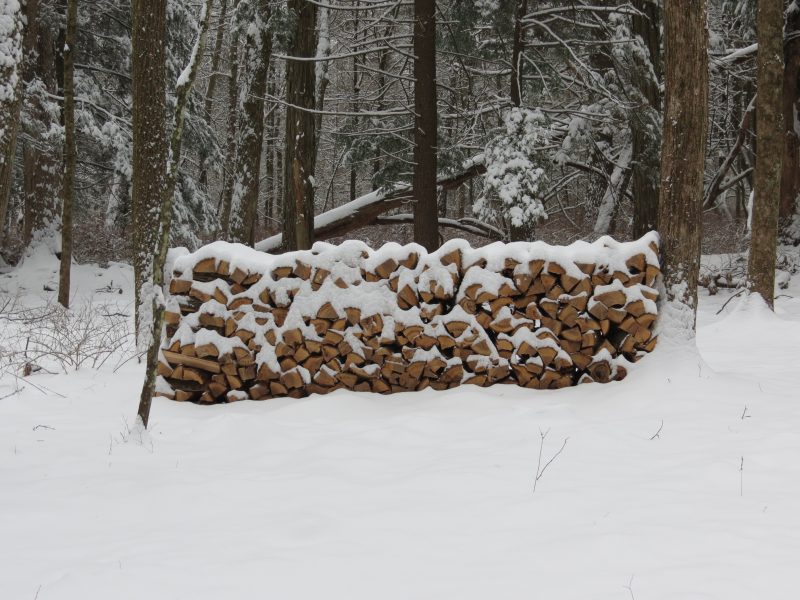“Give me six hours to chop down a tree and I will spend the first four sharpening the axe.” Abraham Lincoln
Yes, we know this article is mostly handy for next year, and won’t help you get your wood pile in shape this year, but there are actually things you can start doing this winter that will make next winter warm and toasty!
Written by Jim Finley, Professor Emeritus, Forest Resources Management, Center for Private Forests at Penn State
University Park, PA – November 20, 2018 – After a long, hot, and, in some places, a wetter than normal summer, it seems autumn has finally arrived. Perhaps your thoughts are turning toward evenings warming in front of the fireplace or cozying up to the woodstove. The US Energy Information Administration estimates that about three percent of all Pennsylvania households depend on wood as a primary heat resource. Updated census data in 2017 found that there are nearly six million households in the state, meaning that about 170,000 homes use wood for heating; however, very likely many more use some wood to supplement their heating demands.
Preparing Firewood
Those folks who burn wood for heat know the mantra that it should be cut to length, split, stacked off the ground, and covered for at least nine months to be dry and ready to burn. Preparing firewood well in advance ensures that its moisture content will approach 20 percent. At this level of dryness, there are fewer issues with creosote formation in the flue, and this certainly reduces risks of chimney fires. As well, the heat gained by burning dry wood over uncured wood is significant. Clearly, there are advantages to thinking a year out if you gather your own firewood.
An important part of firewood preparation involves cutting to length and splitting. Doing this exposes more surface area, which enhances water loss from wood cells. Stacking is also important, as it promotes air movement across the exposed surfaces. Finally, covering, so air is free to move through the stack, keeps precipitation (think rain and snow) from continually wetting the wood.
The Risks of Gathering
Undoubtedly, many Pennsylvanians gather their own firewood on privately held forests or on state forests with appropriate permits. This is arduous work; but at the same time can be enjoyable. However, firewood gathering involves risks. A research paper published in Advances in Emergency Medicine analyzed nearly 116,000 chainsaw injures requiring emergency room visits between 2009 and 2013 in the United States[1]. They found that, “Most injury visits occurred among males (95%) and persons aged 30–59 years and during the months of September through November. The main body sites injured were the hand/fingers and knee.” If you are going to cut and move firewood, please make sure you understand how to use the necessary tools, always wear appropriate and approved safety equipment, and understand your personal limits and skills.
The Pennsylvania Forest Stewardship Program provides publications on a variety of topics related to woodland management. For a list of free publications, call 800 235 9473 (toll free), send an email to RNRext@psu.edu, or write to Forest Stewardship Program, The Pennsylvania State University, 416 Forest Resources Building, University Park, PA 16802. The Pennsylvania DCNR Bureau of Forestry, USDA Forest Service, Penn State Extension, and the Center for Private Forests at Penn State, in Partnership through Penn State’s Department of Ecosystem Science and Management, sponsor the Forest Stewardship Program in Pennsylvania.
[1] Epidemiology of Chain Saw Related Injuries, United States: 2009 through 2013. Advances in Emergency Medicine
Volume 2015, Article ID 459697, 4 pages. http://dx.doi.org/10.1155/2015/459697


